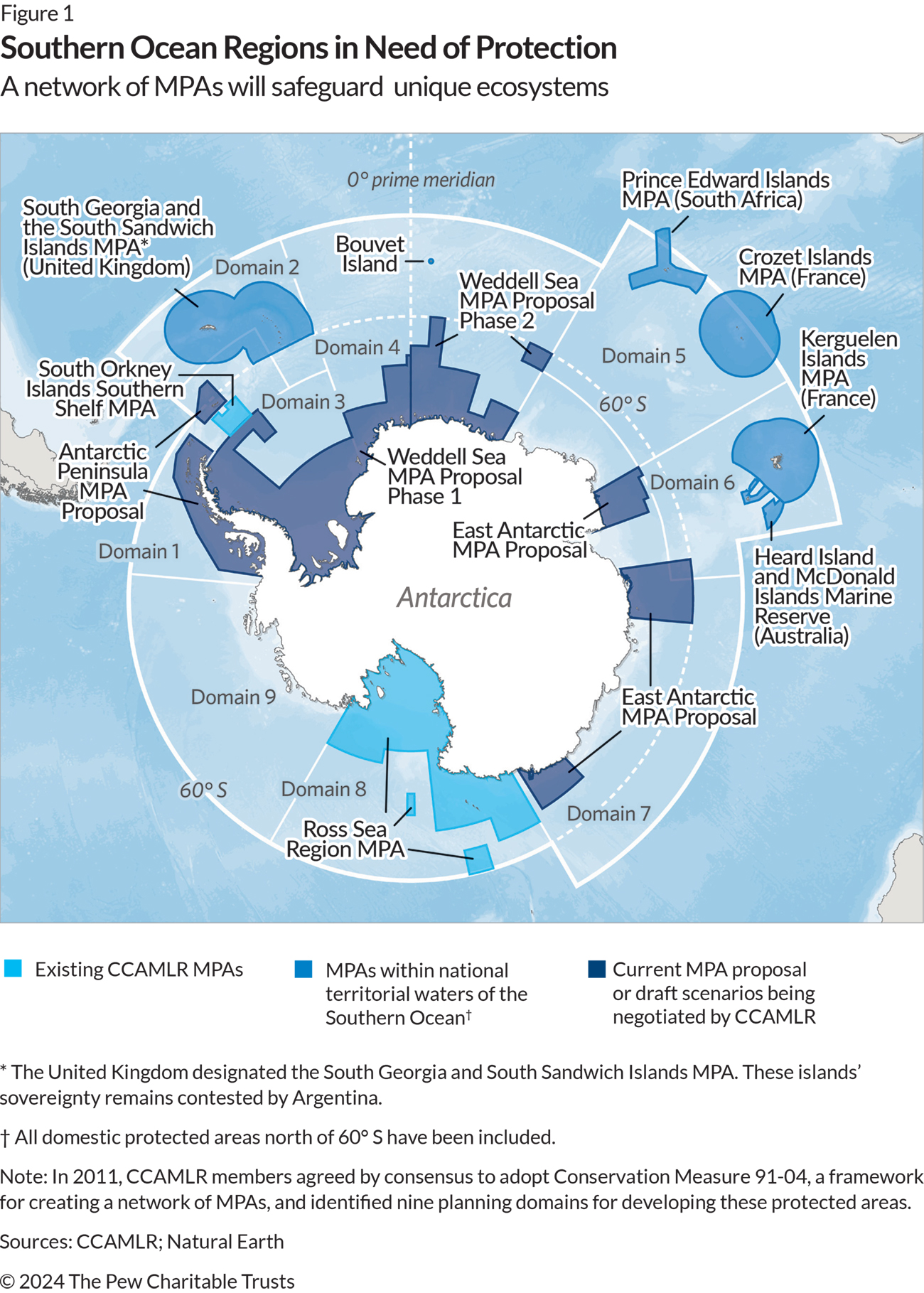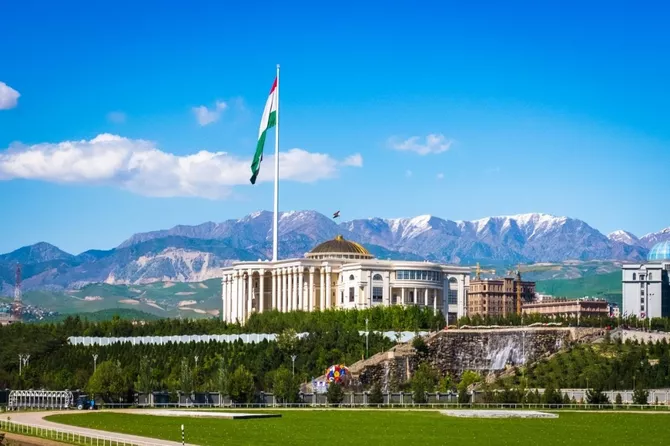Six New Protected Areas Join the IUCN Green List, Showcasing Global Excellence in Conservation – International Union for Conservation of Nature

Report on New IUCN Green List Sites and Their Contribution to Sustainable Development Goals
Executive Summary
Six new protected and conserved areas across China and Colombia have been added to the International Union for Conservation of Nature (IUCN) Green List. These sites have demonstrated exemplary management and significant contributions towards achieving multiple Sustainable Development Goals (SDGs), particularly those concerning biodiversity, sustainable communities, and effective governance. This report details the achievements of each site in relation to the global 2030 Agenda for Sustainable Development.
Analysis of New Sites in China
Four sites in China have been recognized for integrating conservation with community development, directly supporting several SDGs.
-
Huanglong Natural World Heritage Site, Sichuan Province
- SDG 15 (Life on Land): Protects critical habitats for the giant panda and golden snub-nosed monkey, with over 90% forest cover and 2,600 recorded species.
- SDG 16 (Peace, Justice and Strong Institutions): Exemplifies effective governance through a model of community co-management and ecological science.
-
Jiangsu Yancheng Wetland Rare Birds National Nature Reserve
- SDG 14 (Life Below Water) & SDG 15 (Life on Land): Serves as a vital coastal wetland on the East Asian–Australasian Flyway, achieving a 58% increase in red-crowned crane populations.
- SDG 8 (Decent Work and Economic Growth): Promotes sustainable livelihoods through innovative eco-agriculture initiatives.
- SDG 11 (Sustainable Cities and Communities): Fosters community-led conservation through the promotion of a unique wetland culture.
-
Hunan Zhangjiajie Giant Salamander National Nature Reserve
- SDG 15 (Life on Land): Conserves the world’s largest wild population of the critically endangered giant salamander.
- SDG 6 (Clean Water and Sanitation): Implements effective water purification programs within the reserve.
- SDG 8 (Decent Work and Economic Growth): Creates sustainable economic opportunities for local populations through salamander-based eco-industries.
-
Shaanxi Zhouzhi National Nature Reserve, Qinling Mountains
- SDG 15 (Life on Land): Functions as a key sanctuary for the giant panda and golden snub-nosed monkey, maintaining 96% forest cover and over 3,600 wildlife species.
- SDG 11 (Sustainable Cities and Communities): Integrates cultural heritage by preserving Taoist traditions alongside modern conservation practices.
Analysis of New Sites in Colombia
Two sites in Colombia showcase successful models for marine and terrestrial ecosystem management, aligning with key SDGs.
-
Gorgona Natural National Park
- SDG 14 (Life Below Water): Protects vital marine ecosystems, including coral reefs and endangered species like whale sharks and giant manta rays.
- SDG 1 (No Poverty) & SDG 8 (Decent Work and Economic Growth): Supports the economic well-being of local Afro-Colombian communities through a sustainable ecotourism model.
- SDG 16 (Peace, Justice and Strong Institutions): Operates under a participatory governance model that empowers local communities.
-
Galeras Fauna and Flora Sanctuary
- SDG 15 (Life on Land): Manages a mosaic of high-Andean ecosystems, including cloud forests and sacred lagoons, and protects over 200 bird species through a robust ecological restoration program.
- SDG 13 (Climate Action): Enhances ecosystem resilience in the face of environmental change through community-driven conservation efforts.
Conclusion: A Growing Global Partnership for the Goals
The addition of these six sites expands the IUCN Green List to over 200 sites across more than 20 countries. This network represents a significant global effort towards achieving the highest standards of conservation effectiveness and equity.
- SDG 17 (Partnerships for the Goals): The IUCN Green List itself is a testament to a successful global partnership, uniting countries and communities in a shared commitment to protecting biodiversity and advancing sustainable development. Each site’s rigorous, independent assessment ensures that the network collectively contributes to a sustainable and resilient future for all.
Analysis of Sustainable Development Goals in the Article
1. Which SDGs are addressed or connected to the issues highlighted in the article?
The article highlights several issues that directly connect to the following Sustainable Development Goals (SDGs):
- SDG 15: Life on Land: This is the most prominent SDG, as the article focuses on the conservation of terrestrial ecosystems, forests, and biodiversity. It details efforts to protect specific species like the giant panda, golden snub-nosed monkey, and giant salamander, and highlights the high forest cover in several reserves.
- SDG 14: Life Below Water: The article addresses this goal through the inclusion of sites that protect marine and coastal ecosystems. It specifically mentions the protection of coral reefs, marine biodiversity hotspots, and endangered marine species like whale sharks and giant manta rays in Gorgona Natural National Park and the coastal wetland conservation in Jiangsu Yancheng.
- SDG 8: Decent Work and Economic Growth: This goal is connected through the promotion of sustainable economic activities that benefit local communities. The article mentions the creation of “salamander-based eco-industries” and an “ecotourism model” that helps local communities thrive.
- SDG 11: Sustainable Cities and Communities: The article touches upon this goal by emphasizing the protection of the world’s natural and cultural heritage. It refers to “ancient cultural landscapes” and the preservation of “Taoist culture” alongside natural conservation efforts.
- SDG 17: Partnerships for the Goals: The entire initiative of the IUCN Green List is a testament to this goal. The article emphasizes “community engagement,” “community co-management,” and “participatory governance,” showcasing multi-stakeholder partnerships between conservation bodies, governments, and local communities to achieve sustainability.
2. What specific targets under those SDGs can be identified based on the article’s content?
Based on the article’s content, the following specific targets can be identified:
- Target 15.1: By 2020, ensure the conservation, restoration and sustainable use of terrestrial and inland freshwater ecosystems and their services.
- Explanation: All the sites mentioned, from the panda habitats in China to the Andean ecosystems in Colombia, are examples of conserving and sustainably managing terrestrial and freshwater ecosystems. The Galeras Fauna and Flora Sanctuary is noted for its “robust ecological restoration programme.”
- Target 15.5: Take urgent and significant action to reduce the degradation of natural habitats, halt the loss of biodiversity and, by 2020, protect and prevent the extinction of threatened species.
- Explanation: The article is replete with examples of this target in action, such as protecting the giant panda, golden snub-nosed monkey, red-crowned crane, the “world’s largest population of wild giant salamanders,” whale sharks, and giant manta rays.
- Target 14.2: By 2020, sustainably manage and protect marine and coastal ecosystems to avoid significant adverse impacts.
- Explanation: Gorgona Natural National Park is described as a “biodiversity haven” that “protects coral reefs, tropical rainforest and endangered marine giants.” The Jiangsu Yancheng reserve is a “vital stopover on the East Asian–Australasian Flyway” and an example of coastal wetland conservation.
- Target 8.9: By 2030, devise and implement policies to promote sustainable tourism that creates jobs and promotes local culture and products.
- Explanation: The article explicitly mentions Gorgona’s “ecotourism model” helping local communities thrive and the Hunan reserve’s “salamander-based eco-industries” as models of sustainable livelihoods.
- Target 11.4: Strengthen efforts to protect and safeguard the world’s cultural and natural heritage.
- Explanation: The article refers to the sites as “ancient cultural landscapes” and specifically notes that the Shaanxi Zhouzhi reserve is a “cradle of Taoist culture, where ancient traditions and modern conservation walk hand in hand.”
- Target 17.16: Enhance the global partnership for sustainable development, complemented by multi-stakeholder partnerships.
- Explanation: The IUCN Green List itself is a global partnership. The article highlights this at the site level with phrases like “community co-management” in Huanglong and “participatory governance” in Gorgona, which involve multiple stakeholders working together.
3. Are there any indicators mentioned or implied in the article that can be used to measure progress towards the identified targets?
Yes, the article mentions several quantitative and qualitative indicators that can be used to measure progress:
- Population increase of a specific species: The article states that in the Jiangsu Yancheng Wetland, “red-crowned crane populations increase by 58 percent in five years.” This is a direct indicator of successful conservation (Target 15.5).
- Percentage of forest cover: The article provides specific figures for forest cover: “more than 90 percent forest cover” in Huanglong and “96 percent forest cover” in Shaanxi Zhouzhi. This measures the health of forest ecosystems (Target 15.1).
- Species richness: The number of species recorded in a site, such as “over 2,600 recorded species” in Huanglong and “over 3,600 wildlife species” in Shaanxi Zhouzhi, serves as an indicator of biodiversity (Target 15.5).
- Implementation of sustainable economic models: The existence of an “ecotourism model” (Gorgona) and “salamander-based eco-industries” (Hunan) are qualitative indicators of progress towards sustainable livelihoods (Target 8.9).
- Implementation of community governance structures: The mention of “community co-management” and “participatory governance” indicates the establishment of partnerships for conservation (Target 17.16).
- Number of protected areas meeting a global standard: The addition of new sites to the IUCN Green List, which “now includes over 200 sites,” is an indicator of global efforts to protect natural heritage (Target 11.4).
4. Table of SDGs, Targets, and Indicators
| SDGs | Targets | Indicators Identified in the Article |
|---|---|---|
| SDG 15: Life on Land |
15.1: Conservation and restoration of terrestrial and freshwater ecosystems.
15.5: Halt biodiversity loss and protect threatened species. |
– 90% forest cover (Huanglong) and 96% forest cover (Shaanxi Zhouzhi). – Implementation of an “ecological restoration programme” (Galeras). – Red-crowned crane populations increased by 58% in five years (Jiangsu Yancheng). – Protection of giant panda, golden snub-nosed monkey, and the world’s largest population of wild giant salamanders. |
| SDG 14: Life Below Water | 14.2: Sustainably manage and protect marine and coastal ecosystems. | – Protection of coral reefs and endangered marine species (whale sharks, manta rays) in Gorgona National Park. – Conservation of coastal wetlands (Jiangsu Yancheng). |
| SDG 8: Decent Work and Economic Growth | 8.9: Promote sustainable tourism. | – Implementation of an “ecotourism model” helping local communities thrive (Gorgona). – Creation of “salamander-based eco-industries” (Hunan). |
| SDG 11: Sustainable Cities and Communities | 11.4: Protect the world’s cultural and natural heritage. | – Designation of sites as “ancient cultural landscapes.” – Integration of “Taoist culture” with modern conservation (Shaanxi Zhouzhi). – Addition of 6 new sites to the IUCN Green List. |
| SDG 17: Partnerships for the Goals | 17.16: Enhance multi-stakeholder partnerships. | – Implementation of “community co-management” (Huanglong). – Use of a “participatory governance” model (Gorgona). – The IUCN Green List as a global network. |
Source: iucn.org

What is Your Reaction?
 Like
0
Like
0
 Dislike
0
Dislike
0
 Love
0
Love
0
 Funny
0
Funny
0
 Angry
0
Angry
0
 Sad
0
Sad
0
 Wow
0
Wow
0













































































